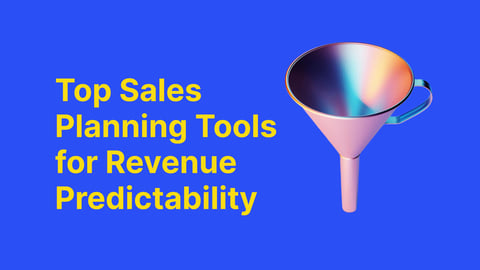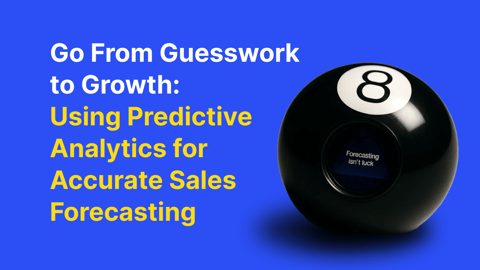In some ways, you can be sure that your current revenue forecasting model is paying off and your sales performance software is helping to bring in the deals. Most of your team are closing their deals and rightly earning their compensation. It looks like your sales territories and resources are a good match for the products you take to market.
The Importance of Revenue Forecasting Models
Let's explore a few models that are used by sales and marketing teams and their pros and cons.
Commonly Used Revenue Forecasting Models
There are several options available to you when looking to forecast revenue
1. Straight-line or Demand Forecasting
A common model for many high-volume sales businesses is the straight-line demand approach. Here, demand for products can be reasonably predictable, with variations for changes in the season or other events that can impact overall sales volumes, such as the start of the school year or kids going back to college. These provide a backdrop against which revenue growth can be managed.
Is it the model for you? Straight-line models with a limited number of variables aren’t designed to be highly accurate. However, they can be useful where you have limited analytics capabilities or limited past sales data to draw upon to make highly sophisticated predictions. They can also be a useful guide for market sizing, where companies aim to get a sense of their potential revenues, assuming they could secure a given percentage of an addressable market.
2. Moving Average
This technique looks at underlying data patterns to estimate future values and outcomes. Traditionally, these averages are calculated on 3- or 5-month figures to predict future sales.
Is it the model for you? This is a popular forecasting method for looking at short-term results within a very limited time span – possibly gauging a sales rep's commission earned over a quarter. There could be a good reason to doubt the figures if there’s a significant fluctuation in the market, such as the COVID-19 pandemic, which may make any predictions redundant.
3. Linear Regression Analytics
This is a more sophisticated approach to forecasting potential opportunities than a straight-line approach, but many organizations lack the analytical expertise to deliver meaningful results. That said, it provides a framework that helps companies think about the market drivers, influences, and variables at play in their target market.
An Optimal Approach for Revenue Forecasting
That was a reasonable approach twenty or even ten years ago. However, the significant advances in capturing, analyzing, and enriching vast quantities of internal business data and external market data mean that more sophisticated analytical options are open to sales managers these days. That isn’t to say that makes their job is easier, just that they now have access to data capabilities that would have made their predecessors envious.
Let's look at some of the data-driven options that can help companies understand the extent to which they can realistically forecast revenues and market size accurately and systematically.
1. Accurately Size the Market
The first step to accurate sales forecasting is accurately assessing the addressable market. With the constant change in new companies, and others merging, trying to keep up with potential customers can be challenging. Consumer tastes change swiftly too, so being able to accurately and speedily assess the size of the market is valuable.
Essential to accurate market sizing is leveraging comprehensive data sets from your own internal CRM, website, e-commerce, and financial systems, as well as external data sources, so you understand who you can sell your product to. You want to capture all the variables that define your market, whether B2B or B2C, and you need to keep this information current as new opportunities emerge, or you find you the need to fine-tune your definition of your addressable market.
2. Forecast at the Correct Level of Demand for Each Product
With your addressable market clearly defined, you want to get a sense of what your likely market share has the potential to be. Much of this will be down to how you position your product or service. Does it compete on offering high-value functionality, or does it lead with price, for example? Does it disrupt the market, or is it a better version of what other companies already provide?
From this, you can start to develop propensity models that help you understand how likely those people in your market are to buy your product.
How do you do this? As ever, let data be your friend and your guide as you take your historical sales data, your marketing data, and your external data to synthesize a picture that helps you understand the opportunity from multiple perspectives.
3. Assess the Productivity of Your Sales Channels
With a sophisticated understanding of the opportunity in place, you can start to put in place the sales plans and go-to-market plans that’ll help you capitalize on these opportunities.
Modern businesses have numerous channels to market, whether it be buying directly from a company's sales reps or through its website. Alternatively, prospects can buy via a company’s partners or affiliates.
Having objective assessments of the opportunity, you can allocate territories and targets based on real-world data, based on real-world data so you can validate your own judgment.
As you go through the sales year, you can assess the effectiveness of your sales channels and see which are the most impactful, and refine your plans and investments accordingly.
Redesigning your sales revenue forecasting model may seem like a weekend migraine in the making, but the value of implementing the optimal approach can’t be underestimated. The correct formula will guide and drive business strategy and hiring decisions and ultimately help you achieve your corporate objectives. To learn more about how to make things easier with the help of AI, download our eBook on the Three Ways AI Helps You Hit Your Sales Goals.




